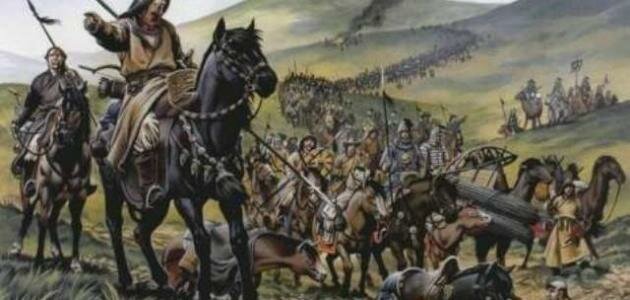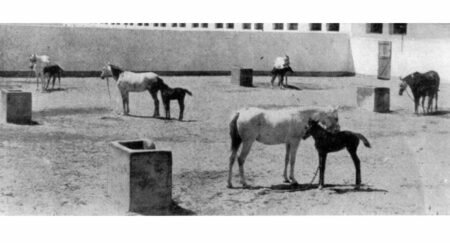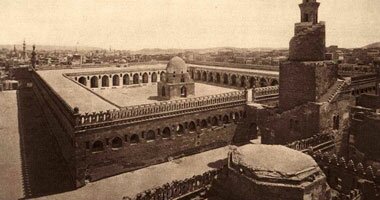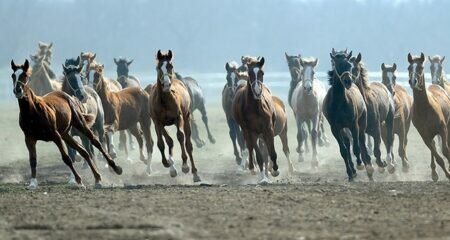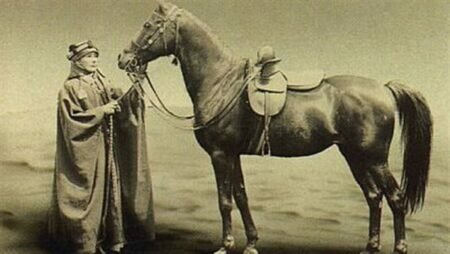The Mamluk state ruled Egypt for approximately 267 years, from 1250 to 1517 AD, yet their power in Egypt did not end with the end of their state, after the Ottoman Sultan Selim I defeated the leader of the Mamluk state Tuman Bay in the Battle of Raydaniyah, but the end of the Mamluks came at the hands of Muhammad Ali in 1811 in the castle massacre.
The Mamluk state was interested in horses and knights; Due to the dangers and wars they were facing, their era began with the war against the Tatars and uprooting their roots in the Arab region led by Seif al-Din Qutuz in the Battle of Ain Jalut in Palestine.
The Mamluk system relied on a basic pillar, the Persians and the knight, and this required attention to the purebred Arabian horses and the establishment of stables. And the horse trade flourished in their era and the horse markets. The Mamluks did not hesitate to pay any price for a purebred Arabian mare. This is what was made clear by the records that Sultan Al-Nasir Muhammad bin Qalawun bought the famous Arab skilled “Al-Qurta” for 64,000 dinars in gold and a meager one.

If we go back in time to the beginnings of the thirteenth century AD, and we walked on our feet from behind the Sinnari House to the Gate of Creation, penetrating an area under the quarter until Bab Zuweila; In it, we will see the Mamluk princes in their most beautiful dress, riding on horses decorated with the most beautiful saddles and cannabis, their swords hanging from their sides, and horseshoes pecking at the ground, announcing that there is a state and knights, and asking: Where are they going? The herald announces a party attended by the Sultan in Rumaila Square below the castle, in which he shows his knights practicing all their equestrian skills and playing with the ball. Then an auction and horse show begins; To select the Sultan, then the princes, then the people and the merchants.
A competition for 1000 riders sponsored by Al-Zaher Baybars
King Al-Zahir Baybars was known for his great love for horses and his interest in equestrianism. It is reported that on September 22, 1263 AD, he held a race in Troja, a place he reached on his return from Alexandria to Cairo, where a thousand horsemen from the Arabs of Troja gathered to race, and a group of soldiers joined them with their horses, and the distance was determined. On which the race will be conducted by Sultan Baybars, and after the race he lavished gifts and money on the winners.
We also find in the book of Al-Zahir Baybars the interest in the passenger box and the presence of shops called Al-Majneesh, which sell horse equipment and accessories.
Historian Baybars al-Qadi (a Mamluk historian who lived in Egypt and a contemporary of the great sultans of the Mamluk state) mentions that in 661 AH the value of fodder, alfalfa and hay eaten by royal horses in the stables amounted to 50 thousand dinars, as if to prove the alimony and its exaggeration.
Horse production boomed in the era of Barquq and Mahmoudi
Sultan Barquq renewed interest in Arab horses, and he followed the approach of Ibn Qalawun, and actually produced thousands of these horses. In the Mamluk era, the stables were known as the royal or honorable stables, and in the castle there were the princes’ stables, known as the happy stables, and stables were made attached to the princes’ palaces, As well as stables in religious, commercial and public facilities.
Sultan Al-Mu’ayyad Sheikh Bin Abdullah Al-Mahmudi
He was a lover of equestrianism, mastered the arts of war and fighting on horseback, as many of the Mamluk princes were famous for their equestrianism, and during his reign equestrianism and interest in horses flourished.


